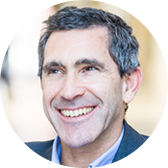
Nuno Gil, Professor of New Infrastructure Development, addressed a major symposium online on infrastructure investment earlier this month. The Symposium on Quality Infrastructure Investment was hosted by the Ministry of Foreign Affairs of Japan and co-organised by the OECD and its Development Centre. The significance of quality infrastructure investment is widely recognised as a key to achieving sustainable, resilient and inclusive growth, and has a crucial role to play in supporting a sustainable recovery from the COVID-19 crisis.
With most developing countries facing a substantial need for capital intensive, high-quality investment to bridge a major gap in very basic infrastructure, Professor Gil spoke about challenges related to project governance, and what structures and processes can be mobilised to overcome them.
In particular he referred to the G20 principles of corporate governance which help policymakers evaluate and improve the legal, regulatory, and institutional framework for corporate governance. “When you read the G20 principles it is clear we are pursuing two objectives that are equally desirable, institutions building and quick infrastructure building. The complex problem that we all face is that reconciling these two objectives under a single governance structure is really hard, but not impossible.”
Delays
Professor Gil said that if you make institutions building a prerequisite for infrastructure development, the elapsed time to develop basic infrastructure can take decades and this is at odds with the urgency of the problem.
And he added: “It is not surprising that frustrated with delays many developing countries have chosen – and will continue to choose - to enter into private deals with Chinese infrastructure ecosystems which prioritise quick infrastructure development at the expense of institutions building.”
During his speech he also endorsed recent efforts to seek innovative ways to reconcile institutions building and (quick) infrastructure development under a single governance structure, such as through the OECD’s PIDA (Programme for Infrastructure Development in Africa) initiative.
Private investment
Meanwhile, although there was much talk encouraging further private investment in infrastructure development, he said this was a tall order. “Attracting private investment in the provision of public infrastructure is difficult in developed countries, and the UK is a good case in point. This is even more so in emerging markets because of a mismatch between the risk profile of private investors and the pervasiveness of cost hikes and delays in infrastructure projects.
“To me there is a need to urgently move away from traditional conceptualisations of high project performance based on the ‘on time and within budget’ paradigm towards inclusive definitions of value creation by which we attend to both the economic value of infrastructure, measured in terms of user willingness to pay, and social value, in terms of job creation, technological spill overs, and other non-user benefits.”
Cost rises
He said a lot of the cost escalation that occurs in infrastructure projects is rooted in the interactions with stakeholders that control essential resources to value creation (e.g. land, consents), but they are non-users of the infrastructure.
“The concerns of these stakeholders are legitimate, but so are the concerns of the investors that the more the environment asks them to make concessions to non-users – often in order to meet the institutions-building objective - the weaker the return on investment, and thus the economic value they can appropriate.
“The way to unblock this dilemma is for governments and development agencies to recognise they need to be prepared to purchase social benefits on their behalf. This will encourage the private sector to step in because it de-risks the investment. Further, by increasing transparency about actual costs and benefits, the access of infrastructure sector to debt capital markets, which is a major hurdle at present, can increase and innovative mechanisms can be made viable to increase liquidity.”

